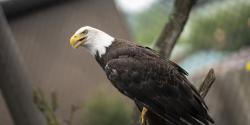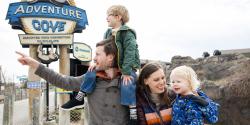Silvered-leaf langurs live almost entirely in trees, which offer protection from predators and access to food.
Their long tails provide balance as they navigate the treetops in search of food. These diurnal monkeys are active during the day and sleep through the night—the whole group sleeps in a single tree.
Scientific Name: Trachypithecus cristatus
Conservation Status: Vulnerable
Size: Body length ranges from 18 to 22 inches, with an additional tail length of more than 2 feet.
Weight: Ranging from 11 to 17 pound, with males generally being larger than females.
Median Life Expectancy: 9.4 years










